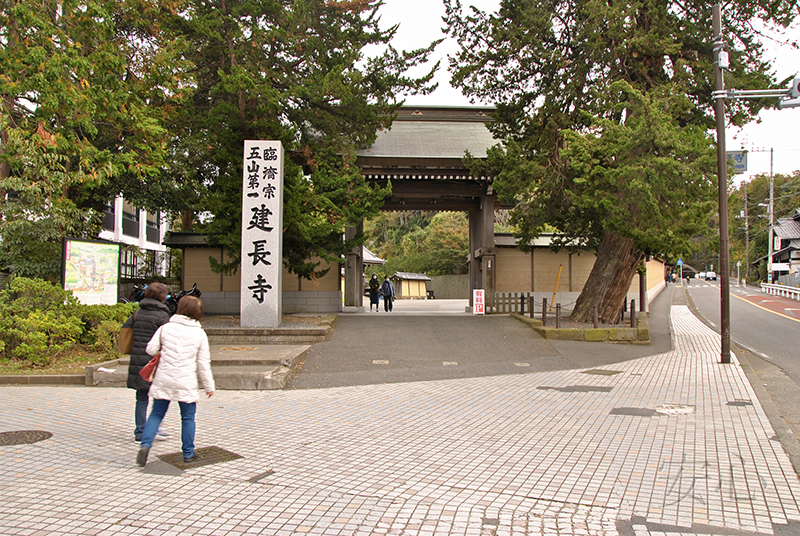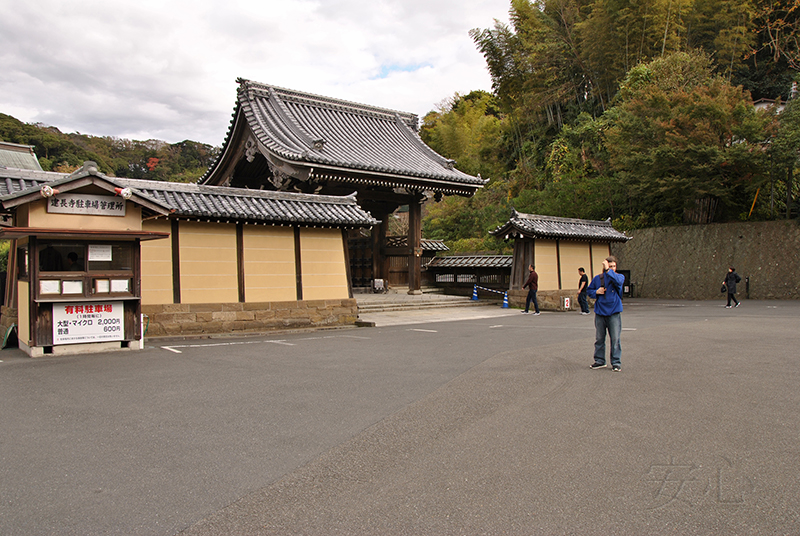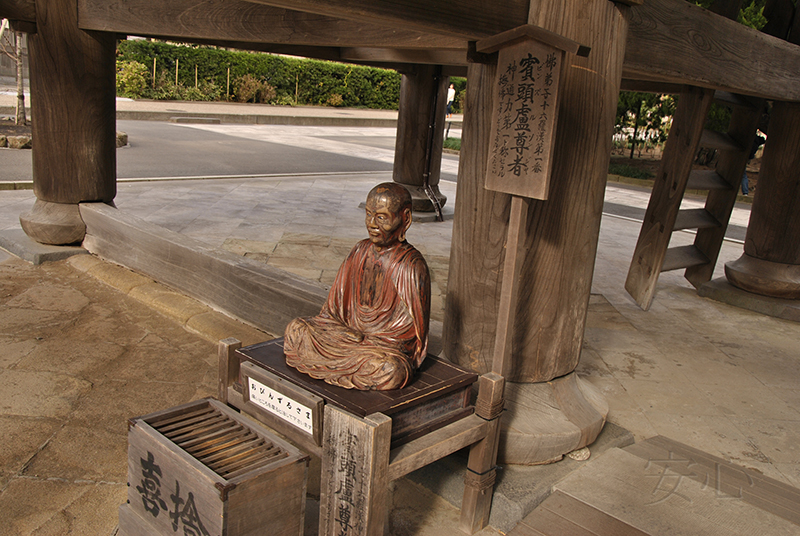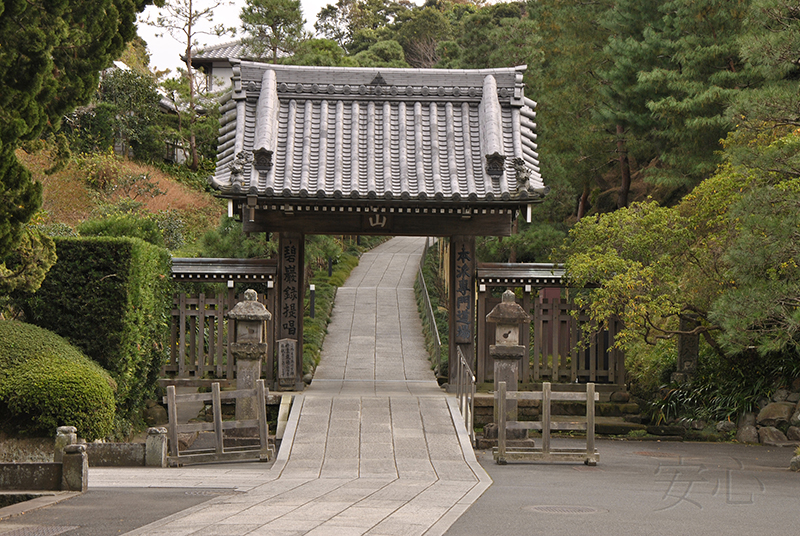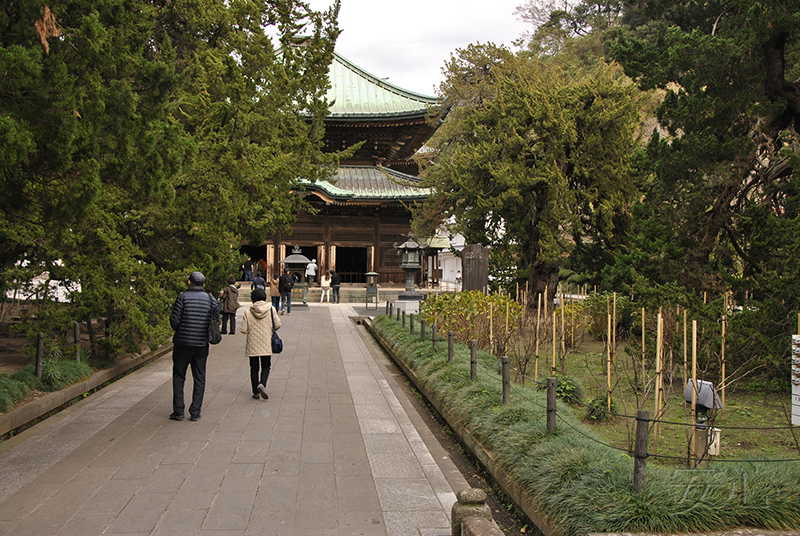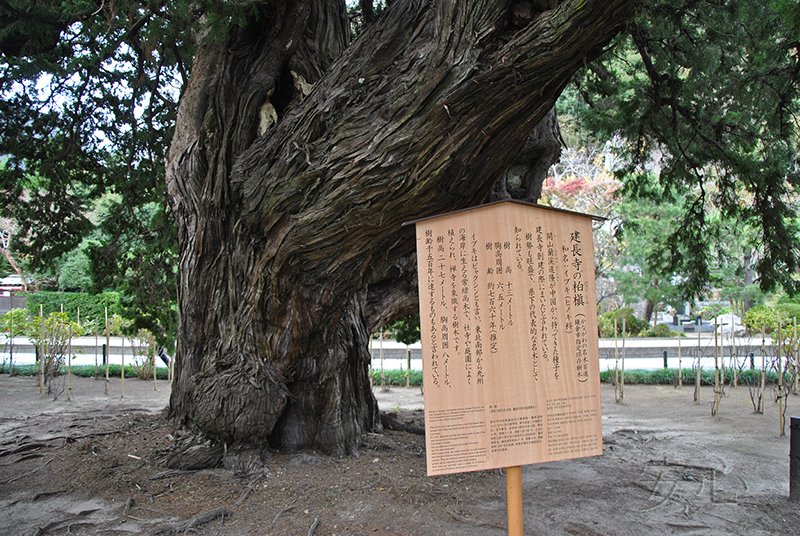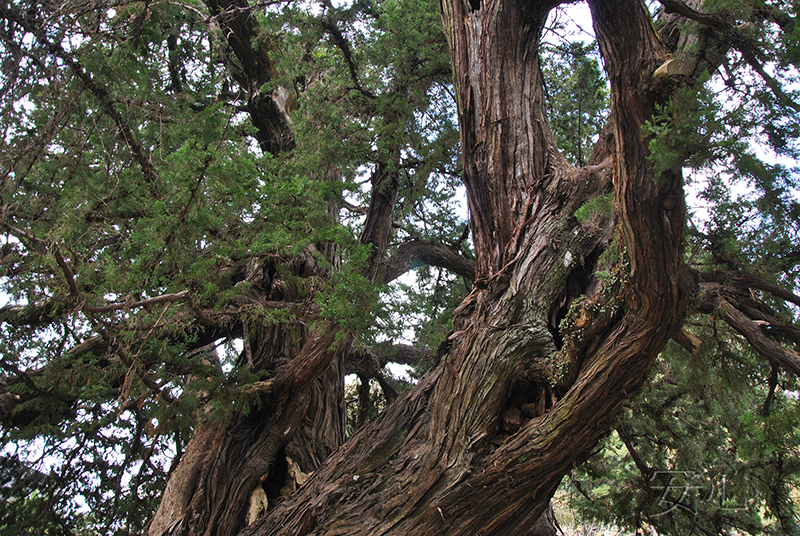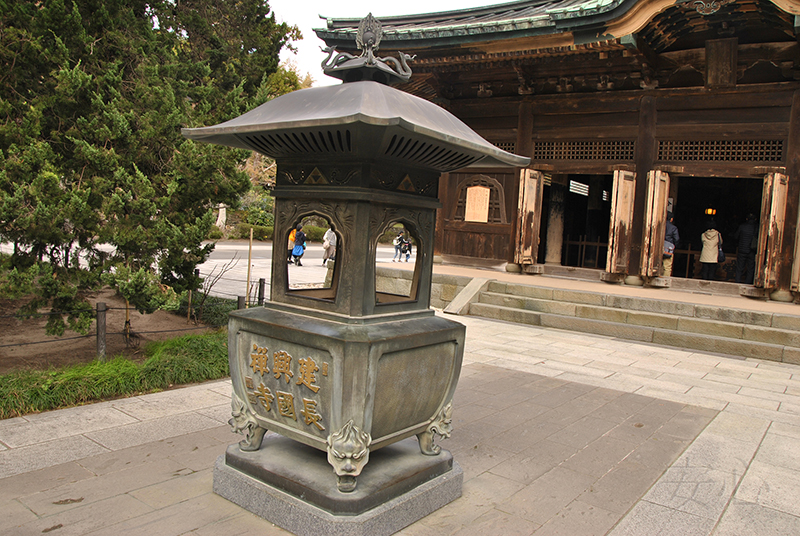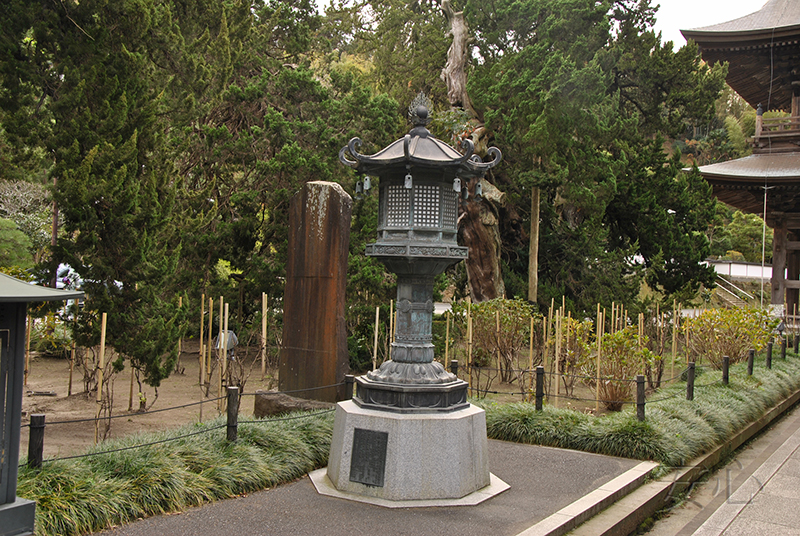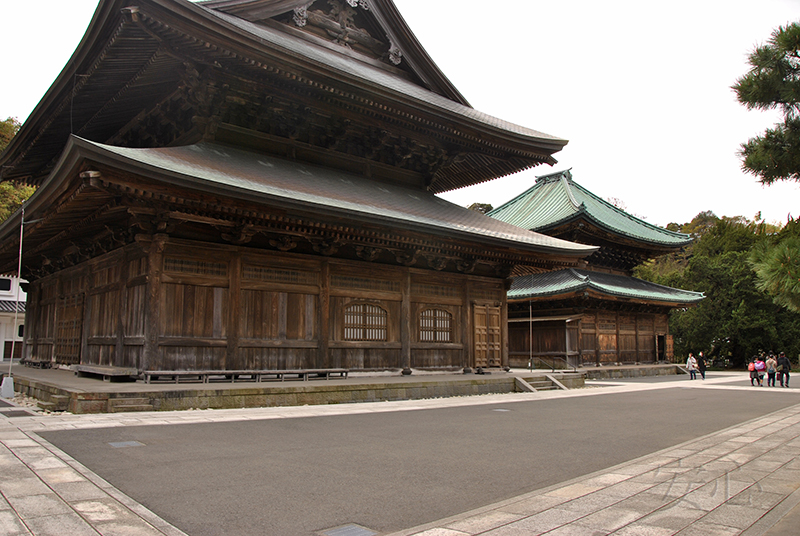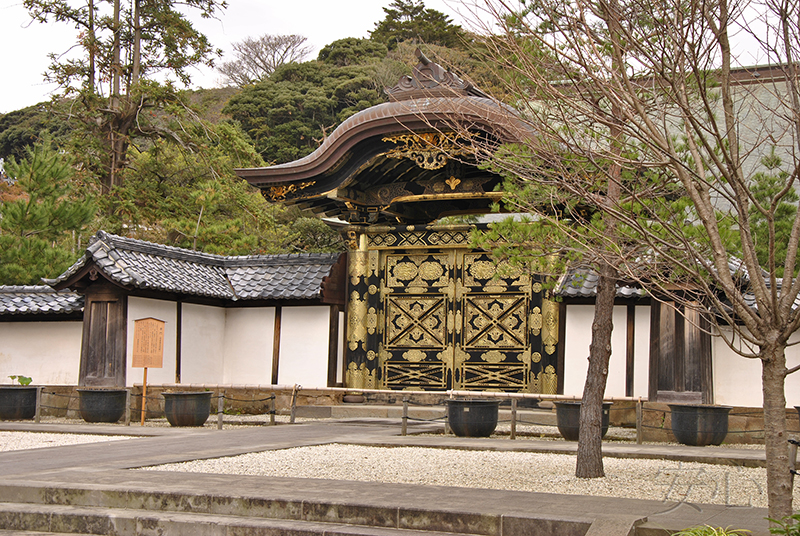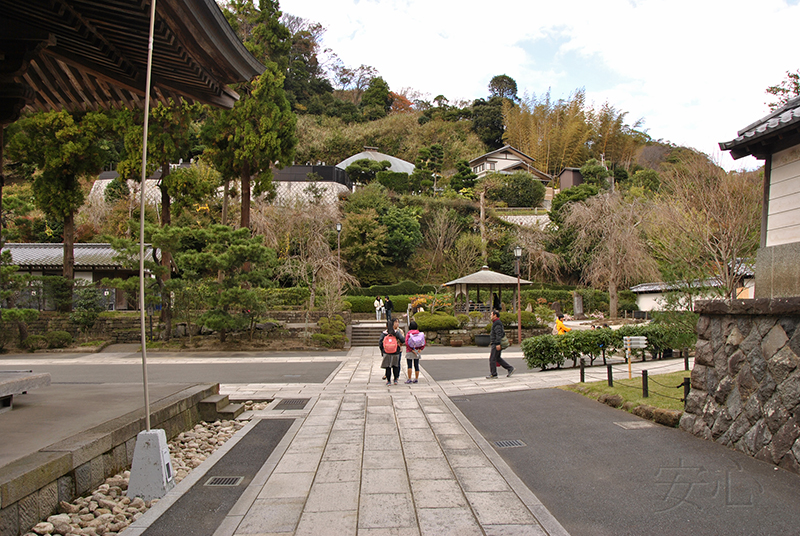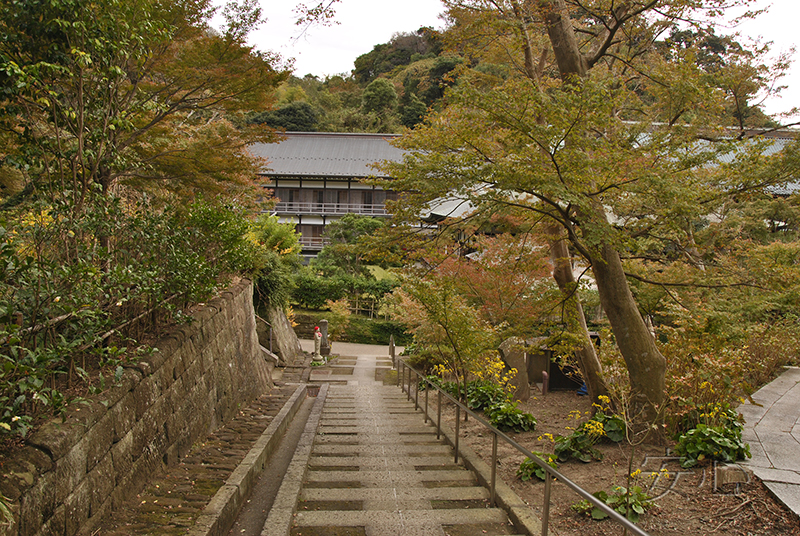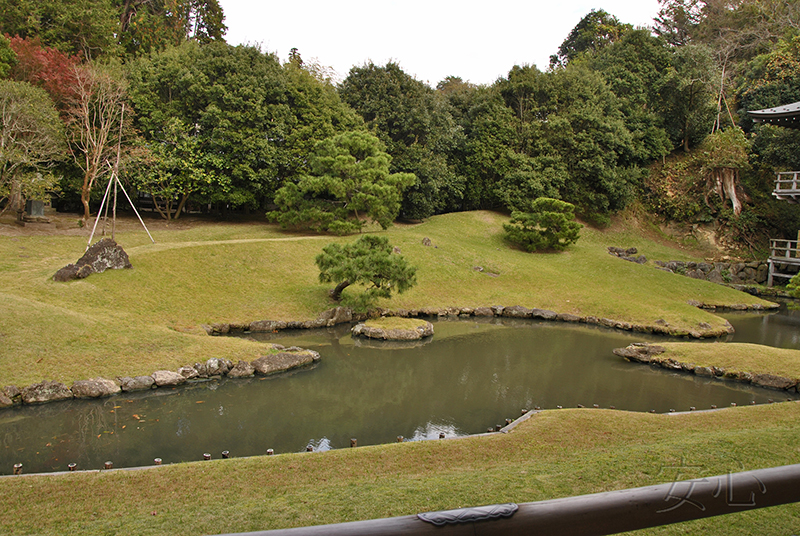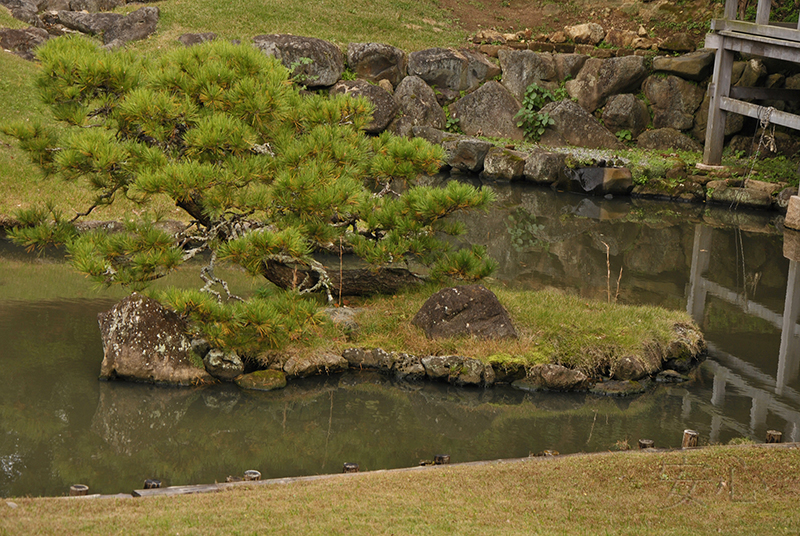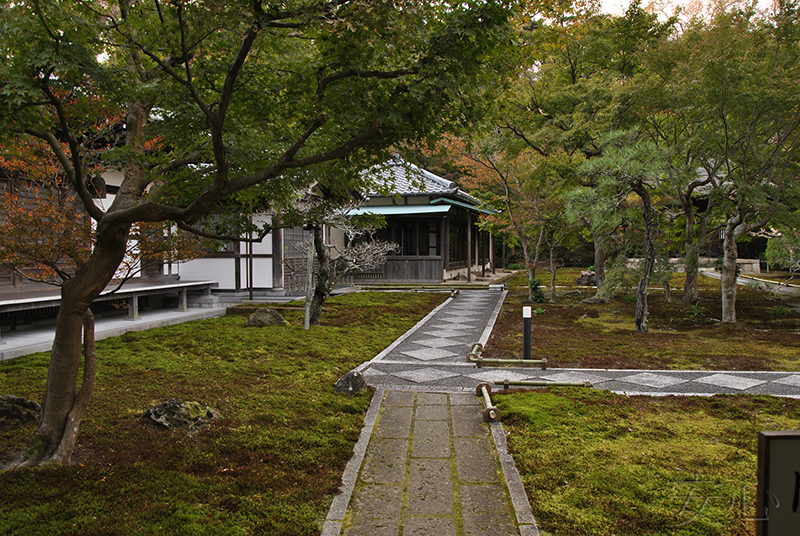
The gardens of Kencho-ji Temple, Kamakura
The Kencho-ji Temple was founded in 1253 by a Chinese priest, Rankei Doryu (Daigaku-zenji) upon the request from a regent of the Kamakura shogunate, Hojo Tokiyori, to gain national prosperity through Zen.
The architecture is in accordance with the Chinese Zen style of buildings, in which So-mon Gate, San-mon Gate, Butsu-den (building for the main hall, guest building, and priest room) are built in a straight line.
The origin So-mon gate was constructed at Hanjuzanmai-in Temple in Kyoto in 1783 and moved here in 1940. The Chinese characters on the frame of So-mon Gate are pronounced "kofukusan" and mean "a temple that brings in enormous happiness".
A wide road lead to San-Mon gates. Beautiful cherri trees grow on both sides of the road. Of course, in early spring this part is especially amazing, however, in autumn we also were charmed by perfectly formed tree crowns, mighty stones and evergreen shrubs.
San Mon Gate is the country's National Cultural Property. It is believed that entering through this gate free you from any form of strong desire, addiction, and obsession.
Rankei Doryu, the founder of the temple, said: “The Kencho-ji Temple is open to anyone who intends to learn Zen. There is always a pleasant breeze that equally treats all people on the temple grounds”. This meant that the temple is open to everyone, not only the disciples engaged in spiritual practice.
The upper part of the gate, called rojo, houses statues of Buddhas and Arhats who have completed their spiritual practice.
To the right of the San Mon gate there is a large Bonsyo temple bell, cast in 1255.
Nearby is another gate and the road up to the observation deck.
The road from the San Mon gate to the main temple of Butsu-den is famous for a pair of ancient junipers that grow on both sides of it. They listed in the One Hundred Trees in Kanagawa Prefecture and Kamakura City’s designated trees for preservation. It is said that these trees have grown from a seed that Rankei Doryu brought from China and planted at the time of the founding of the temple. Thus, junipers should be around 760 years old! Their height is 13 meters, tree circumference at average chest height is 6.5 meters.
In Japanese, these junipers are called Ibuki, or Byakushin. They grow from the southern Tohoku region to the Kyushu coastline. Byakushin are commonly planted on temple grounds and gardens and are especially a symbol of Zen temples. In nature, Ibuki trees can reportedly reach a height of 27 meters, a circumference of 8 meters, and age of 1,500 years.
Butsu-den was originally built as a mausoleum for the shogun’s wife, and only in 1647 was converted into a Buddha temple. That is why it differs from traditional Butsu-den (the construction of the roof and ceiling).
Not only the building of the Buddha temple itself is interesting, but also individual details, such as lanterns, a bell, stones.
Another interesting building is the Dharma Hall (Hatto). It was built much later, in 1825, and is dedicated to the goddess Kannon.
Nearby, behind the golden Chinese gate (kara-mon), is the house of the head priest of the temple.
The territory is very beautiful, the gardens are well maintained.
There are a lot of hedges, single and multi-row, straight and wavy, formed and growing in free form.
And, as always, I note the most important thing for what we chose this temple. Of course, this is a stunning garden with Sampeki pond (Sampeki-chi). The name of the pond, Sampeki, describes the green color of trees reflected in the blue water. The author of the garden is also Rankei Doryu.
A temple pond is usually located in front of the temple, but the pond at Kencho-ji Temple is uniquely located at the very back of the grounds. You can see the garden from the engava along the building. The pond itself has an elongated shape, with curved coastlines. Unfortunately, it was redone several times, including by the famous Muso Kokushi, so it has come down to our time in a slightly modified form.
It is believed that the shape of the pond repeats the hieroglyph "heart, soul". However, do not look for an exact match, the similarity is very arbitrary. Like it often happends in Japanese gardens, we can see only a hint, only the realization that the image is hidden here, but not an exact copy.
A particular pleasure in this garden is the viewing of the hills. It’s hard to believe that they are man-made. Such bends, transitions, I believe, are required for study by those who plan to create a garden with hills.
Around the pond are the Tokugetsu-ro, Daikyakuden, and Hojo buildings that were used for receiving guests. The two-story building on the east side called Tokugetsu-ro, which was created in 2002 as part of the commemoration of the 750th anniversary.
Right in front of it, in the pond there is the small island of Turtle, symbolizing a long and happy life.
There is one interesting fact related to the Kencho-ji Temple. Every year, on July 15, a shogaki is held here (Buddhist memorial ceremony to calm the souls of the dead samurai). However, unlike other temples, the memorial service is held twice here. The second time is to commemorate the soul of Kajiwara Kagetoka, a samurai who died in Kamakura era. Legend has it that one day, after the end of the service, Rankei Doryu saw the ghost of this samurai. He, having knowed that the ceremony was over, became very sad. And then the priest conducted it a second time, especially for a warrior.
Garden Information:
Address: 8 Yamanouchi, Kamakura, Kanagawa 247-8525,, JAPAN
Opening hours: from 8.30 a.m. to 4.30 p.m.
anshin©2011All rights reserved. When using the materials of the site, reference is obligatory.
Proposals for co-operation, as well as comments and suggestions on the site please send to the address: anshinsad@gmail.comtel: +7 (965) 121-80-60, 10am-20pm
